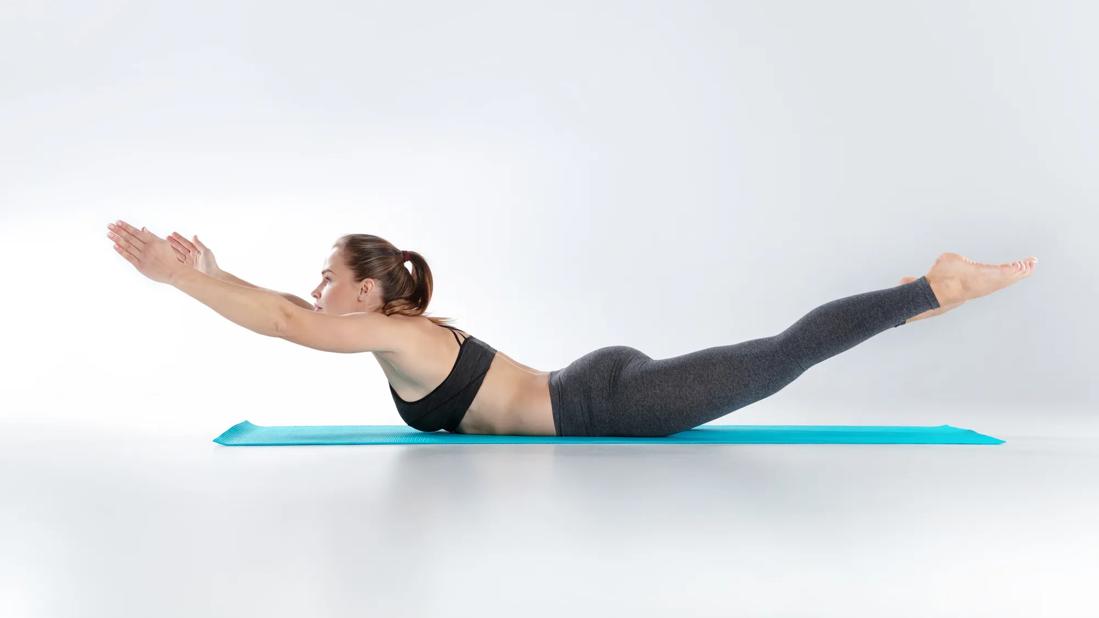Somatic Pilates is less form-focused and more experience-focused

Somatic Pilates blends a traditional Pilates practice with the teachings of an intentional movement theory called “somatics.” This hybrid approach downplays the importance of form, strength and flexibility — in other words, all the things you think about when you hear the word “Pilates.” Somatic Pilates focuses on body awareness and mindful connection instead.
Advertisement
Cleveland Clinic is a non-profit academic medical center. Advertising on our site helps support our mission. We do not endorse non-Cleveland Clinic products or services. Policy
What makes somatic Pilates so good for you? Exercise physiologist David Creel, PhD, explains.
Somatics has only existed since the mid-1970’s. But the underlying concept is much older.
“A somatic Pilates class may move slower than a standard class,” Dr. Creel says. “But slow doesn’t mean easy. Talk to your provider before starting a new exercise routine.”
Here are five sample exercises to get you started. While doing them, quiet your mind and notice your breathing. If your thoughts wander, gently redirect them. Concentrate on where your energy comes from and where it’s going. Does it feel blocked? If you feel tense or tight, focus your mind and breath on relaxing the affected area.

This exercise is great for your abdominal muscles.
Advertisement
If you have issues with neck pain, place your hands behind your head for extra support.

Doing this exercise may not give you abs like the kid from Krypton. But it will strengthen your core and improve your posture!
You can modify this exercise by:

You need good core strength to maintain your balance. (Don’t be surprised if you start off a bit wobbly!)
This exercise can be modified in several ways:

This is one of those exercises that looks a lot easier than it actually is.
You can modify this pose if you need a bit more support.
Advertisement

You don’t even need a mat to do this exercise!
If this stretch is too intense, modify it by rolling a little less.
Skip this exercise if you have balance issues, glaucoma or POTS.
Advertisement
Somatic Pilates may not be as results-oriented as regular Pilates. But Dr. Creel says it can still make a positive impact on your overall health. A somatic Pilates practice can:
Advertisement
Somatic Pilates may be peaceful. But it can still be challenging.
“Pay attention to the difficulty level of the class,” Dr. Creel advises. “Somatic Pilates may be lower intensity, but it’s still strength training. Start with an instructor to ensure you’re doing things safely.”
Dr. Creel recommends choosing someone certified by the American College of Sports Medicine or the American Council of Exercise.
If you have injuries or medical conditions, confirm the instructor has the knowledge and experience to teach you. That will give you peace of mind as you start your mindful movement practice.
Learn more about our editorial process.
Advertisement

You can improve your athletic performance over time by breaking up your workout regimen into focused cycles

Lower-intensity workouts can deliver high-quality health and fitness results

Incremental changes in your exercise routine can improve your strength and endurance over time

Understanding heart rate zones can help you tailor your workout to reach your goals

Increase the size of your muscles by bulking up on protein and focusing on slow, intense movements with progressive overloading

Low-impact exercises help you recover faster between sets, during cool downs and on rest days

Eccentric is slow and steady, while concentric is fast and controlled

Weightlifting can help you build muscle mass, reduce joint pain and increase flexibility to improve your quality of life

The best parenting style balances enforcing rules and showing plenty of love

Tips include cutting back on sugar, focusing on exercise and managing stress

It can be harder to let go when you’ve invested time, energy and emotions — but it might be the healthier choice long term